John Hall tried so hard to make people want a “modern” Rickenbacker, and it just never worked. Bless his heart, as we say in the South.
And it’s not like these attempts were without merit. The 200/2000 Series guitars and basses, the 650 guitars, and the 4004 basses all have small but devoted fan bases today. Okay, maybe not the 200/2000 Series, but the 650 and 4004 for sure! But in my opinion, the best one—the one that should have worked—was the 380L “Laguna”. So why didn’t it?
Given how obscure this guitar is today, we’ll start by explaining what it was. And the short answer is “a modernized 360”.
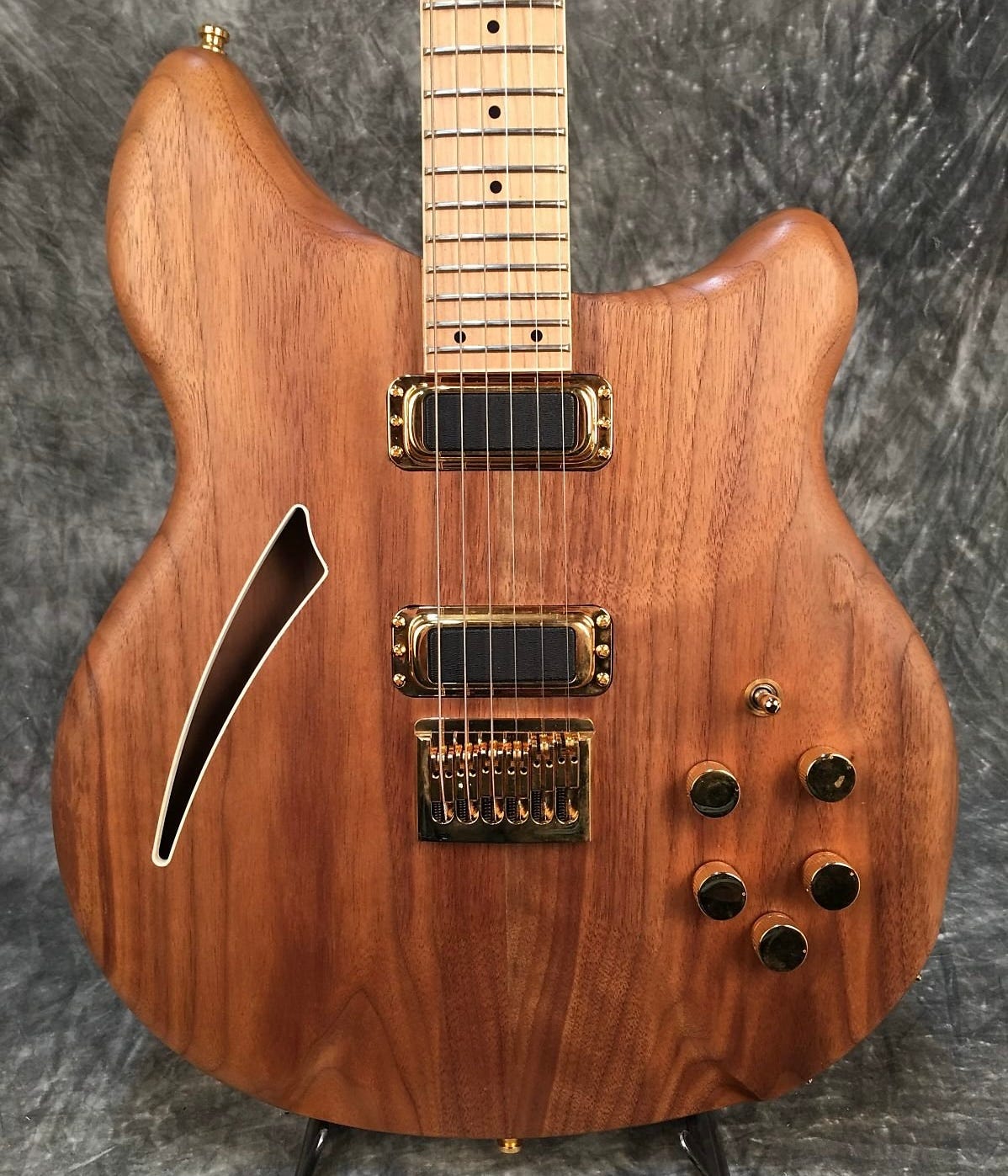
But the general shape is about all the 380L had in common with a garden-variety 360. Launched in 1995, the walnut body (20 years before the 360W!) featured a bound back and soundhole just like the 360 (albeit checkered on the back), but no pickguard—meaning the controls were back mounted and were accessed via a backplate.
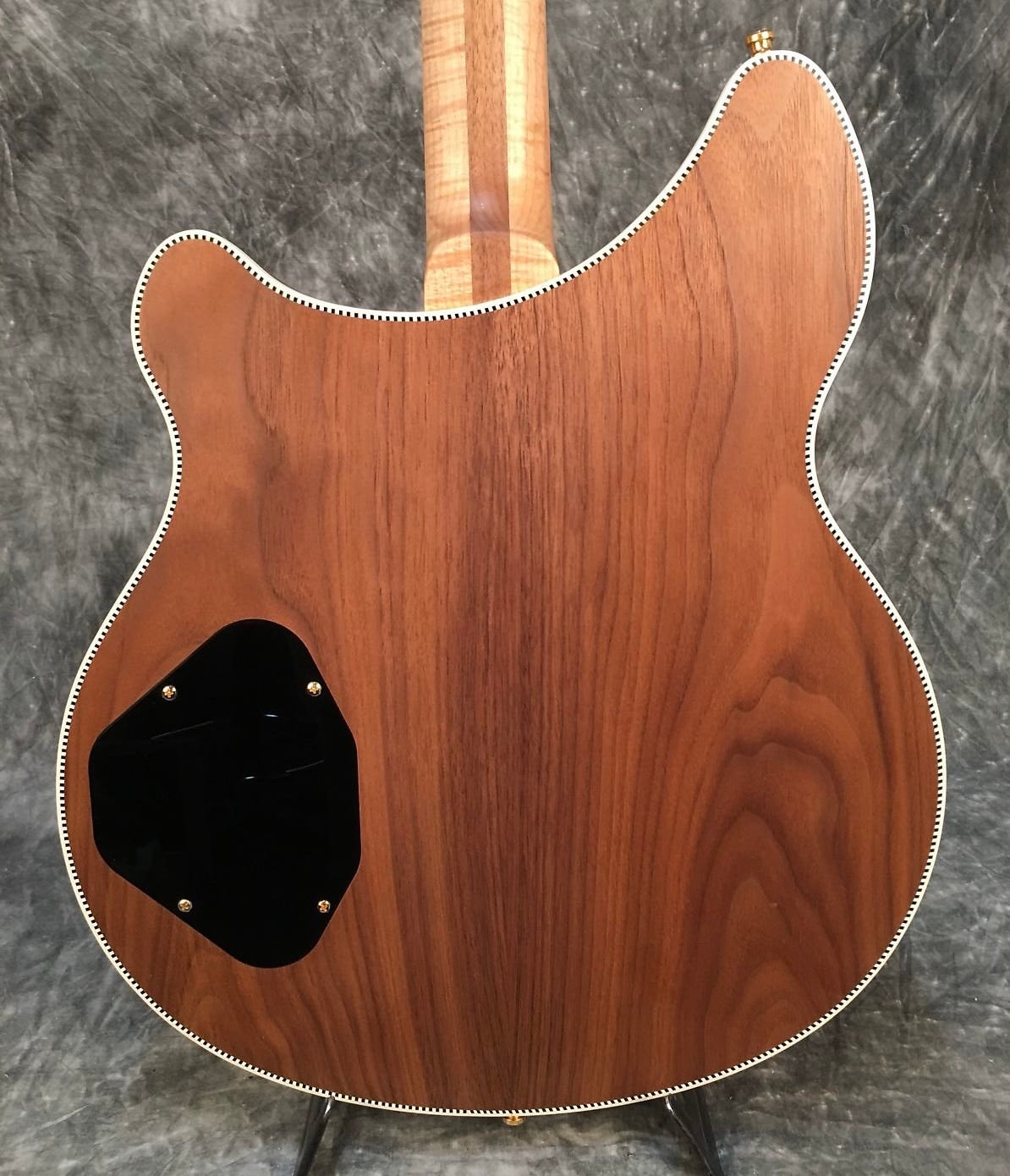
The 24-fret neck was the 1/8” wider-than-standard version with a maple fingerboard and dot inlays as used on its contemporary “modern” cousin the 650–a width first introduced on the 660/12TP in 1991. Unlike the 650’s 1-piece maple neck though, the 380L’s neck was a three piece maple/walnut/maple sandwich with walnut wings, and the maple fingerboard was bound.
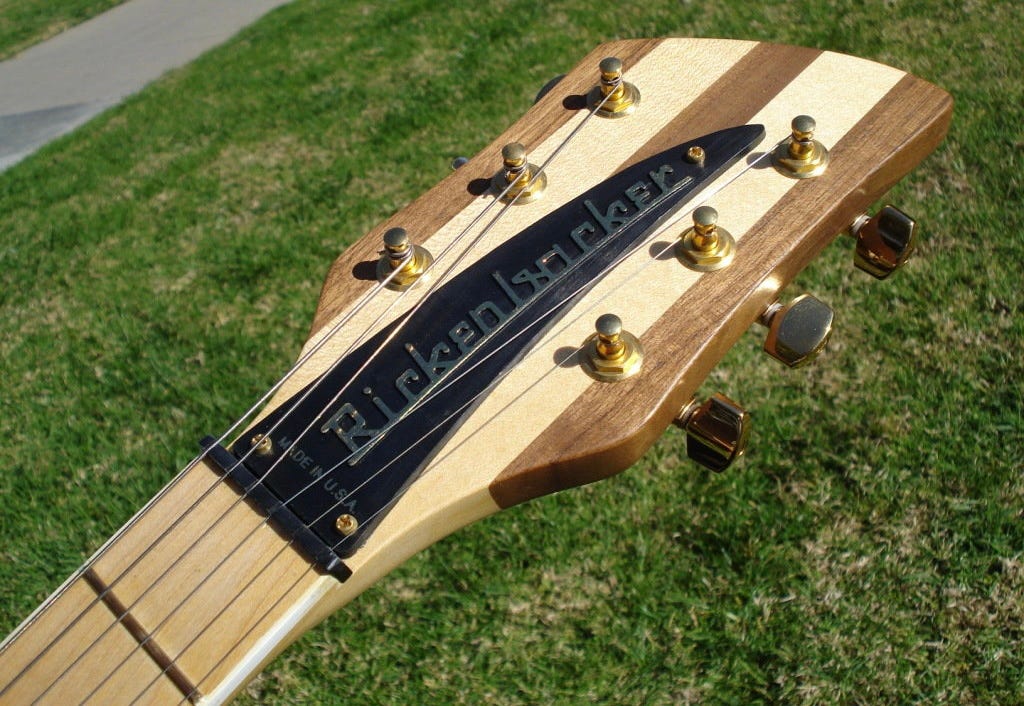
Now here’s where things start to get really interesting. The 380L was the first semi-hollowbodied (and still only!) Rickenbacker to feature the 3/8” deck height commonly found on solidbody guitars like the 450 and 650 instead of the “normal” semi-hollowbody deck height of 3/4”. This creates both issues and opportunities.
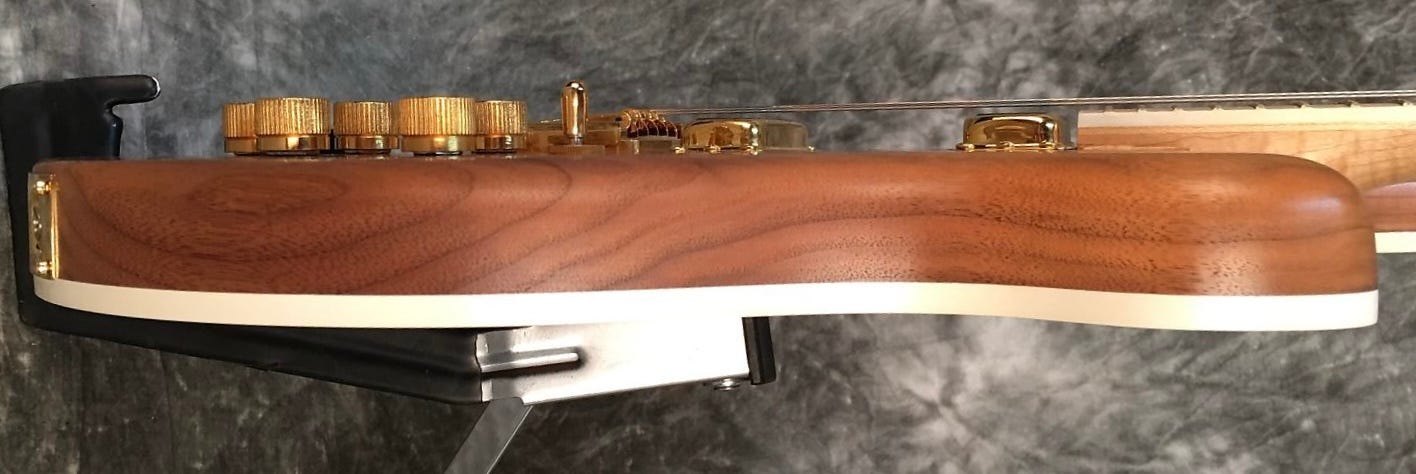
The issues are that both the standard Rickenbacker 6-saddle adjustable bridge and pickups are too tall to surface mount with a 3/8” deck height. The opportunity is that you’re forced to do something new, and we all know that the standard Rickenbacker bridge is…not the greatest!
And so they did something new for a semi-hollowbody. The pickup solution was relatively easy—they were countersunk slightly to provide the needed clearance—just as had been done on the 650 a couple years earlier.
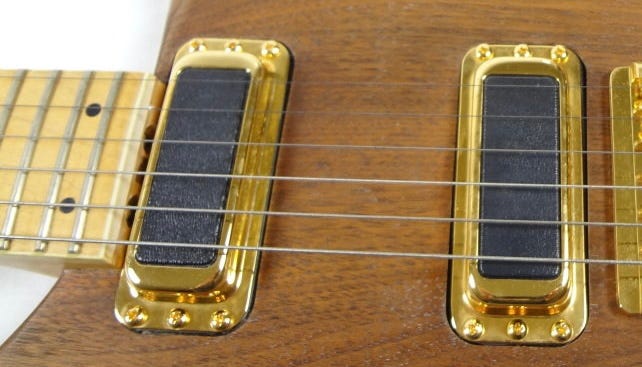
The pickups themselves were HB1 humbuckers, first introduced in 1989. While the coils in those pickups can be split, the 380L was not wired to take advantage of that capability. The next “something new” was the bridge.
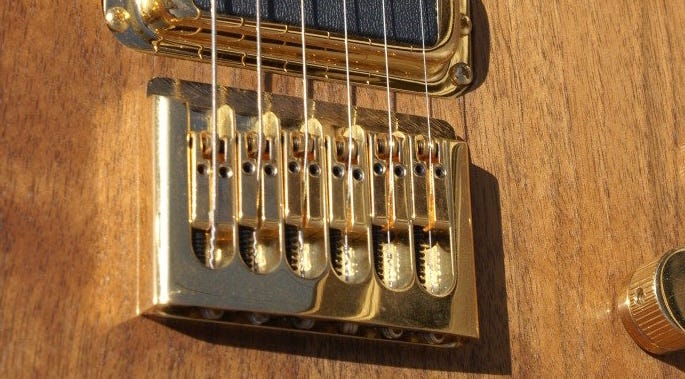
Again, the 380L followed the same path as the 650 and used a top-mounted solid bridge custom designed for Rickenbacker by ABM. With individually height adjustable roller saddles, the bridge was a LOT better than the standard Rickenbacker bridge. And with this bridge, you have no need for the Rickenbacker “R” tailpiece—which you may not have even noticed until now. But you still have the ramp!
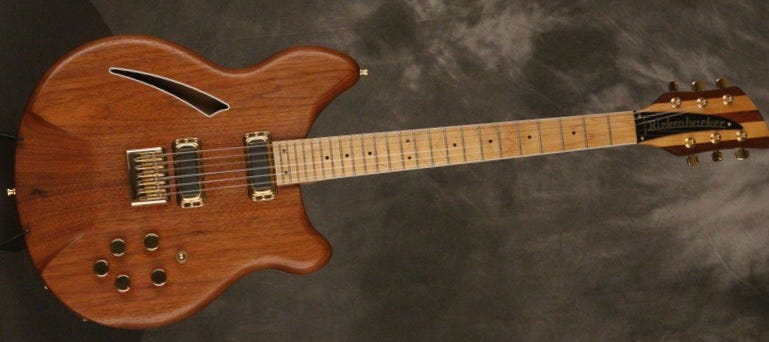
So overall, a pretty cool package. Modern features with a (mostly) classic look. But we haven’t even talked about the 380L’s best party trick: the 380L PZ!
Almost indistinguishable from the normal 380L, the 380L PZ featured a piezo transducer equipped bridge to allow you to blend in “acoustic” tones. The standard 5-knob wiring harness was adapted as follows:
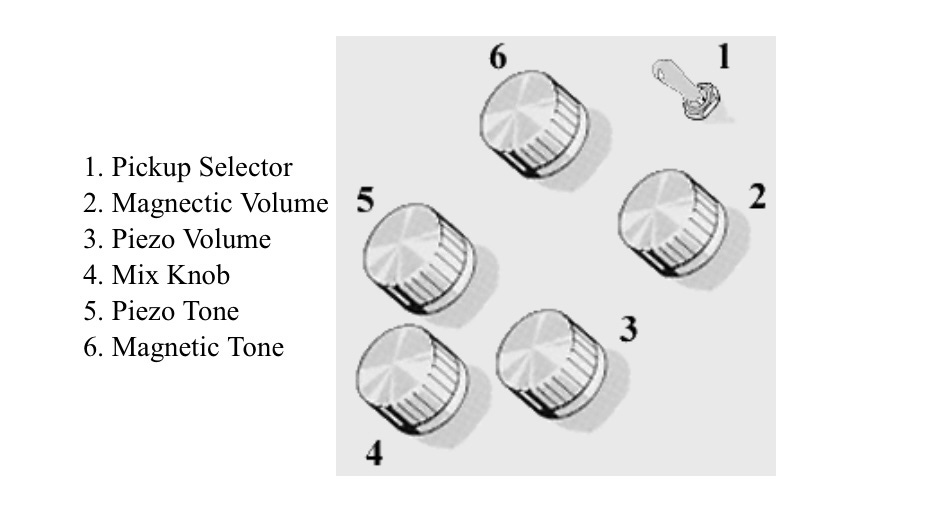
The visual differences between the PZ and non-PZ version of the 380L are discreet: look at the bridge saddles. As seen above, the non-PZ version has roller saddles. The PZ version has transducer saddles of two types over the guitar’s life. From the 1995 launch until late 2002, the saddles were round and kinda look like split ball bearings:
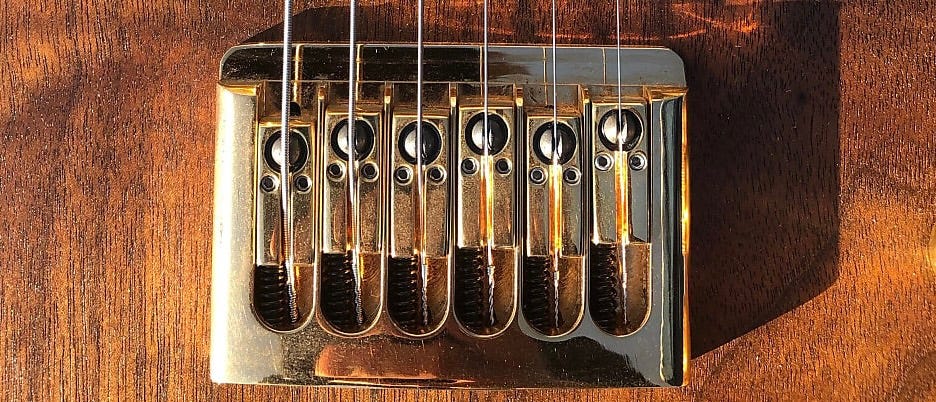
From 2003 to 2006, the saddles look more like the edge of a coin:
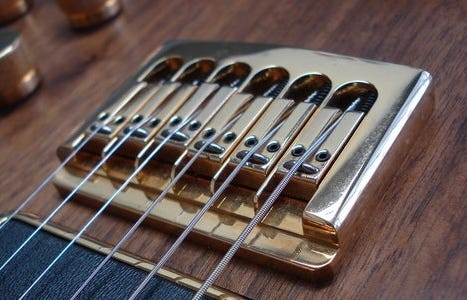
Now, I have seen a handful of pre-2003 guitars with this bridge. Whether this is due to both bridges being used at the same time or retrofits I cannot say. Regardless, the transducer saddles (both versions), components, and circuitry were bespoke for Rickenbacker and produced by Lloyd Baggs. The ABM bridge frame was identical, but the saddles were modified to accept the transducers.
Early guitars (1995-1996ish) had different backplates for the piezo and non-piezo models:
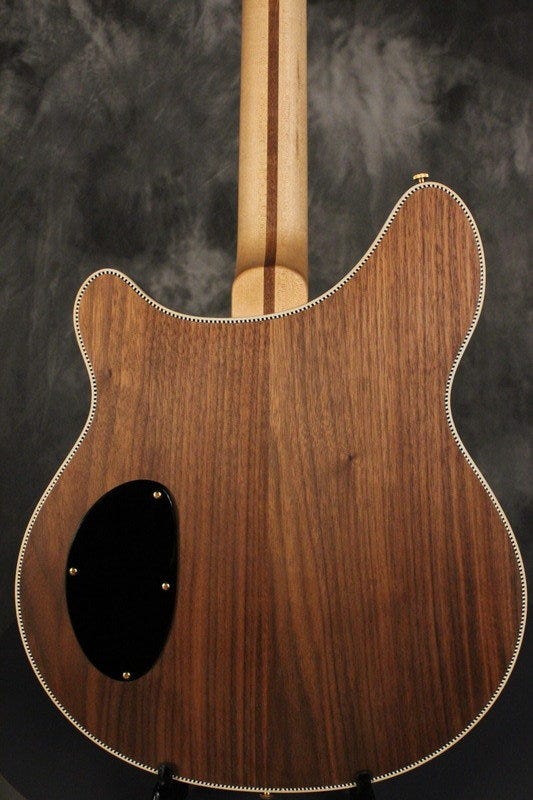
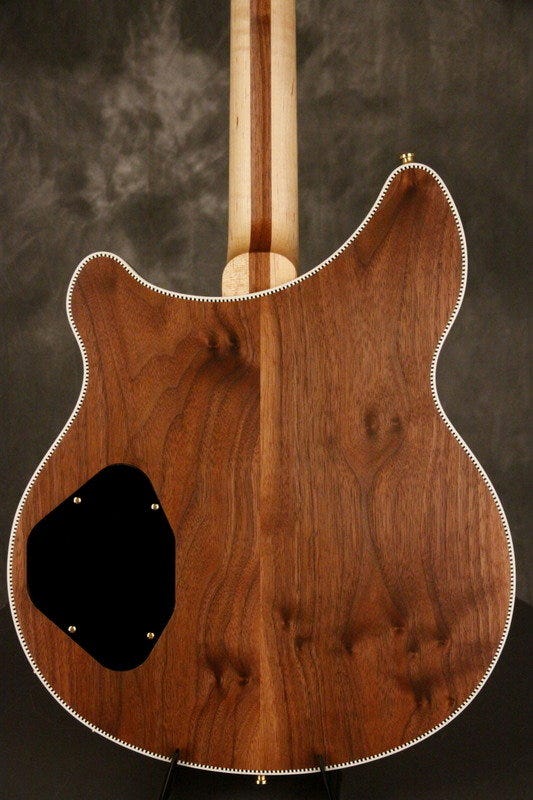
The larger piezo version was to accommodate the battery required to power the piezo components. Around 1997 they standardized and began using the larger backplate on both.
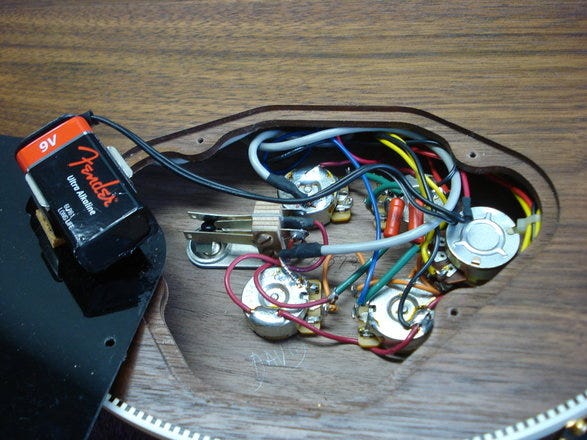
Both guitars—but especially the PZ version—are well thought out, very playable, and extremely useful guitars. But in 2006 the model was discontinued after eleven years of very low sales. So why didn’t they succeed?
Well, the 380L was about $200 more—around $420 today—than a roughly equivalent 360. The PZ option was an expensive upgrade over that as well, at $250 additional—about $525 today—so the box didn’t get ticked often.
Cost aside, the real problem is I’m not exactly sure who this guitar was for. Too modern looking for the average Rickenbacker player and too “vintage” looking for the hoped-for target audience, it never really found a demographic.
A pickguard and traditional Rickenbacker colors might have enticed more “core” Rickenbacker customers to give it a try…but that wouldn't grow the base and in fact would have probably made it even LESS appealing to the hoped-for wider audience. Like it or not, the Rickenbacker brand name has a position and an image that none of John Hall’s attempts were able to shift.
Which is a shame cause this is a REALLY good guitar that plays great and makes some really cool sounds. If you ever get the chance to try one you’ll see exactly what I’m talking about.
And as to “why Laguna?”, my best answer is “vibes, man”. All those 90s Rickenbackers got “vibe-y” names like “Atlantis” and “Shasta” and “Excalibur” and “Laramie” and “Sierra” and “Comstock” and “Dakota” and “Colorado” and “Cheyenne” and…“Laguna”.
Want to learn more about…everything else? Check out the rickenbacker101 site map and see what’s already been covered! Have a suggestion about what we should tackle next? Drop it in the comments and we’ll add it to the queue.




Man I love this series Andy. I had a Laguna, Laguna PZ and a Laguna Paul W. converted into a Laguna/12 PZ for me. See it here: https://www.studio-california.com/380l-piezo-12string-conversion
I had Paul do the 12, which was clear-coated, because John Hall mentioned that he had one in the RIC Museum and that he really like the look. Paul did the clearcoat, which was a long process as walnut is hard to seal, and then suggested using walnut paint to create shading. The first two photos show it with just the clearcoat and then you can see the shading on the headstock. It was also done around the body edges. It came out quite well.
I really loved the Lagunas (and the walnut 650s) and how they played and sounded. The neck was wonderful and the range on the ones fitted with the Piezo was diverse. Over a span of 20+ years I've sold them all but also have the 330W which plays quite nicely too, but is no Laguna (hahaha). Thanks so much for these great reports. You really cover the subjects well.
Another great article. I'd love to play one! And Tim Rock's 12-string conversion is really cool. Did Paul double up the strings through the holes in the back similar to the 660 tailpiece?